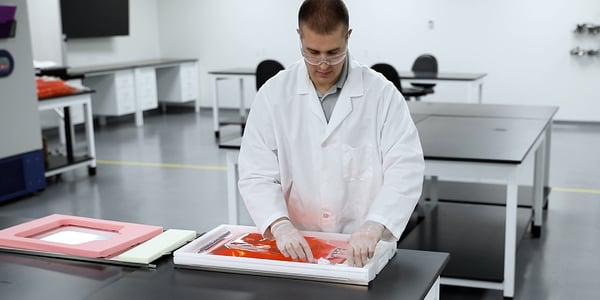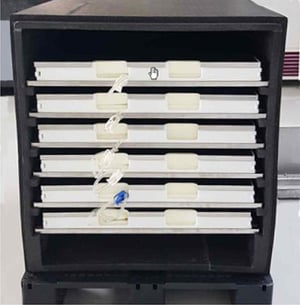Like Benjamin Franklin once stated, “An ounce of prevention is worth a pound of cure.” This could be said for mitigating risk to storage of your biologics too. Even the slightest temperature change from a freezer door being opened and closed numerous times to setting alarms off while searching for product hidden inside can compromise drug product. Losing time and money over product can be prevented. Here are some tips to keep your biologics viable in both long- and short-term freezer storage.
Short-Term Storage
The most common risk when storing biologics is overloading your freezer. Having too much product inside can cause two scenarios:
- Taking too long to find a specific sample or product, causing the temperature to rise inside, setting off the alarm.
- Using the wrong freezer for the wrong application. Freezers meant for storage are not always meant for freezing.
Biologics in different stages of the freeze/thaw process do not always belong in the same freezer, especially if they require different freeze/thaw and storage rates. Ensuring your freezer is appropriate for each application is a great way to keep temperatures uniform and get the most out of your product.

Long-Term Storage
Keeping your product safe long term is less risky than short-term storage, typically because the freezer door will not be opened on a regular basis, ensuring even temperatures. The temperature is not the only factor to consider at this stage, however. In some cases, such as for proteins, bulk drugs, and cryopreservation, you may need to complete a study to see if the product can be stable in long-term freezer storage. It is also critical to regularly inspect your freezers. You should not risk product viability or loss of cell banking by neglecting preventive maintenance.
Freezer Optimization
 Storage within your freezer is one of the best ways to make sure your temperatures are consistent. Optimizing space with our Aramus™ bags and shells, which are designed to slide in and out and can be stacked together, not only make product easy to find, but also best utilize your freezer space, saving resources, time, and money. Not having to pluck bottles, set off alarms, and raise the inside freezer temperature are the most preventable ways to protect your product both short- and long-term.
Storage within your freezer is one of the best ways to make sure your temperatures are consistent. Optimizing space with our Aramus™ bags and shells, which are designed to slide in and out and can be stacked together, not only make product easy to find, but also best utilize your freezer space, saving resources, time, and money. Not having to pluck bottles, set off alarms, and raise the inside freezer temperature are the most preventable ways to protect your product both short- and long-term.
We understand the complexities of single-use solutions and know how to get the most from your freeze/thaw process . By delivering customized solutions backed by a global infrastructure, customers obtain value outcomes. Through our world-class Life Sciences Technology Center, you gain access to experts with deep knowledge of testing, equipment, and containment, and we guide you through our freeze/thaw process optimization strategies.
Learn more about how we can optimize your process.




